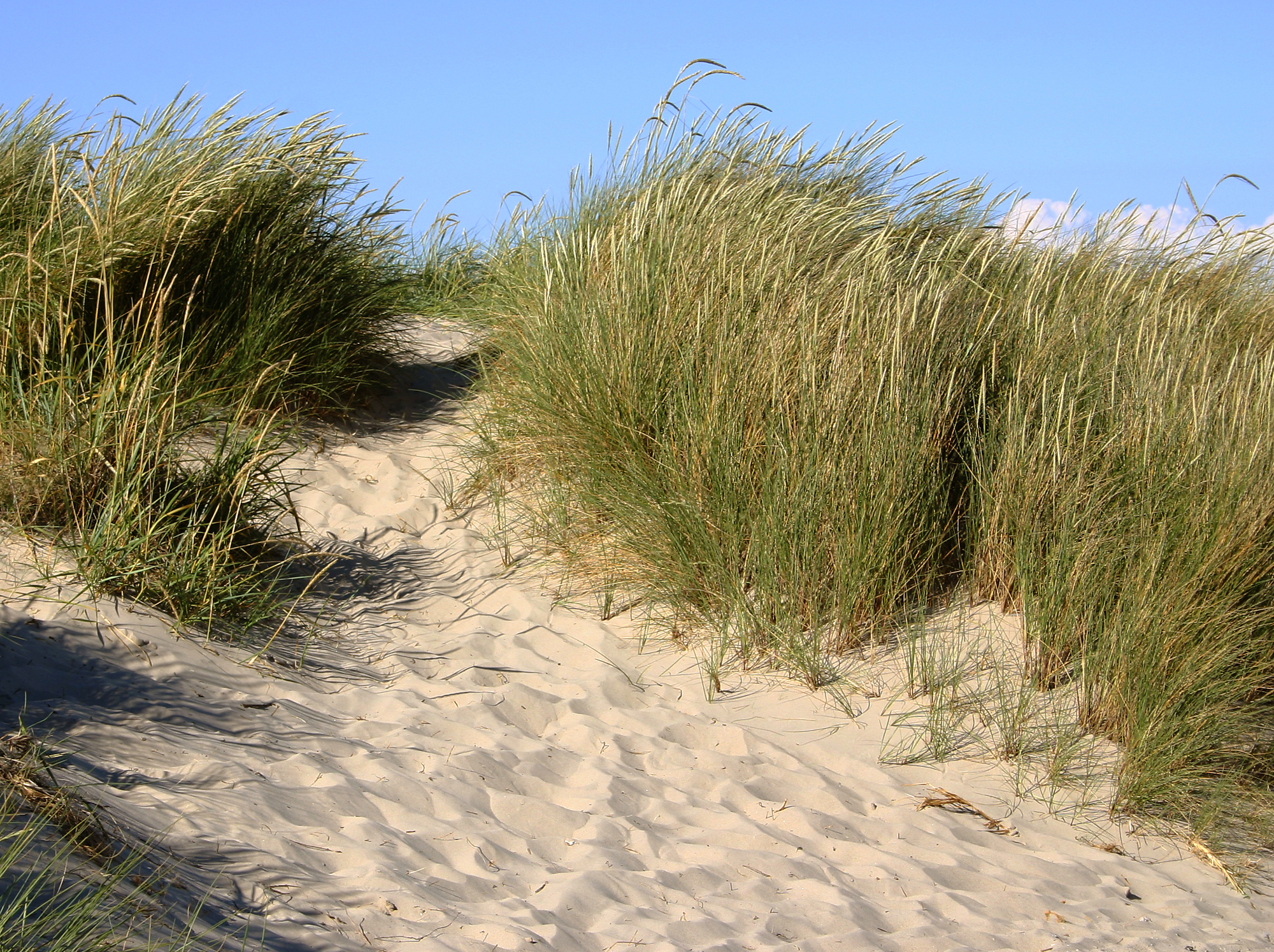- Ammophila arenaria
Taxobox
name = "Ammophila arenaria"

image_width = 210px
regnum =Plant ae
divisio = Magnoliophyta
classis =Liliopsida
ordo =Poales
familia =Poaceae
genus = "Ammophila"
species = "A. arenaria"
binomial = "Ammophila arenaria"
binomial_authority = (L.) Link"Ammophila arenaria" is a species of grass known by the common names European Marram Grass and European Beachgrass. It is one of two species of the genus Ammophila (marram grass). It is native to the coastlines of Europe and North Africa where it grows in the sands of beach dunes. It is a perennial grass forming stiff, hardy clumps of erect stems up to convert|1.2|m|ft in height. It grows from a network of thick
rhizome s which give it a sturdy anchor in its sand substrate and allow it to spread outward. These rhizomes can grow laterally by 2 meters (7 feet) in six months. One clump can produce 100 new shoots annually. [cite web|title=Invasive Plants of California's Wildland: Ammophila arenaria |publisher=California Invasive Plants Council |url=http://www.cal-ipc.org/ip/management/ipcw/pages/detailreport.cfm@usernumber=5&surveynumber=182.php |accessdate=2008-09-18]The rhizomes tolerate submersion in sea water and can break off and float in the currents to establish the grass at new sites. The leaves are thick and coated in a white waxy cuticle. They are up to convert|1|m|ft long and sharply pointed. The cylindrical
inflorescence is up to convert|30|cm|in long. It is adapted to habitat made up of shifting, accreting sand layers, as well as that composed of stabilized dunes.Invasiveness: Pacific coast of North America
"A. arenaria" is also recognized as one of the most problematic
noxious weeds of coastalCalifornia . This sand-adapted grass was introduced to the beaches of western North America during the mid-nineteenth century to provide stabilization to shifting sand dunes. It grew readily and it can now be found from California toBritish Columbia . The grass is invasive in the local ecosystems, forming dense monotypic stands that crowd out native vegetation, reduce species diversity of nativearthropod s, and cover vital open stretches of sand used for nesting by the threatened Western Snowy Plover ("Charadrius alexandrinus").cite web |title=UC Cooperative Extension Species Profile: Ammophila arenaria |publisher=University of California |url=http://ucce.ucdavis.edu/datastore/detailreport.cfm?usernumber=5&surveynumber=182 |accessdate=2008-09-18] The plant's spread has changed the topography of some California beach ecosystems, especially in sand dunes. The presence of this grass was a major cause of the destruction of native dune habitat inOregon andWashington during the twentieth century.cite web|last=Pickart |first=Andrea J. |date=1997 |url=http://www.cal-ipc.org/symposia/archive/pdf/1997_symposium_proceedings1934.pdf |title=Control of European Beachgrass ("Ammophila arenaria") on the West Coast of the United States |work=1997 Symposium of the California Exotic Pest Plant Council |accessdate=2008-09-20]Several methods have been employed in attempts to eradicate the grass in California, including manual pulling, burning, mechanical removal followed by salt water irrigation, and
glyphosate application. Studies to find the best methods are ongoing.References
External links
* [http://ucjeps.berkeley.edu/cgi-bin/get_JM_treatment.pl?8738,8799,8800 Jepson Manual Treatment]
* [http://plants.usda.gov/java/profile?symbol=AMAR4 USDA Plants Profile]
* [http://calphotos.berkeley.edu/cgi/img_query?query_src=photos_index&where-taxon=Ammophila+arenaria Photo gallery]
* [http://www.arc.govt.nz/environment/plants-and-animals/search-for-plants/index.cfm?63E0F20E-14C2-3D2D-B905-50098EBBE4B9&plantcode=Ammare Plant details - marram grass] , New Zealand website discussing control of "A. arenaria".
Wikimedia Foundation. 2010.
